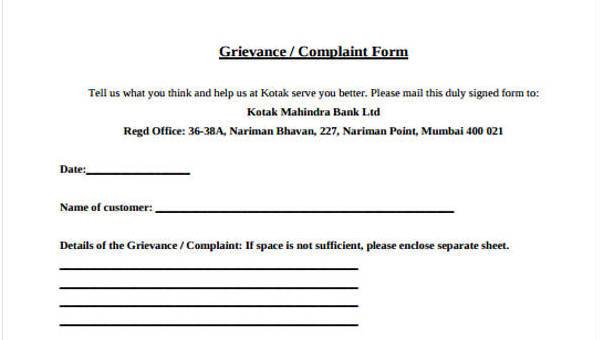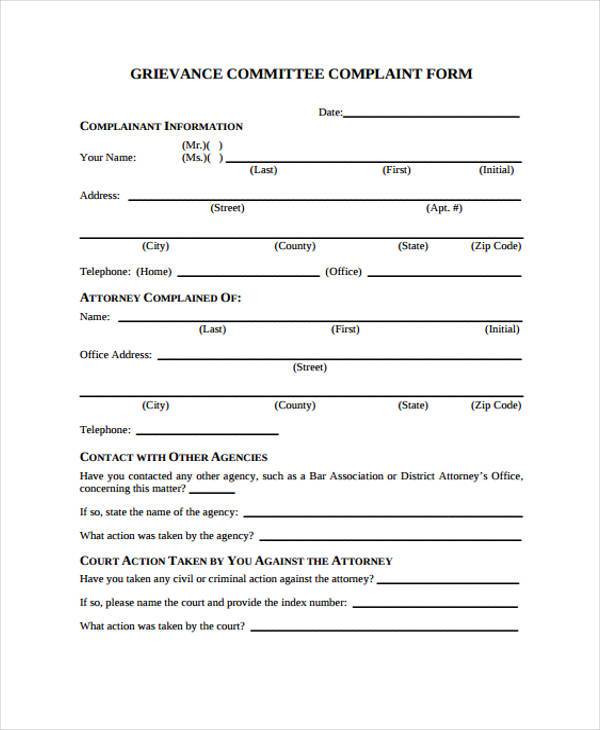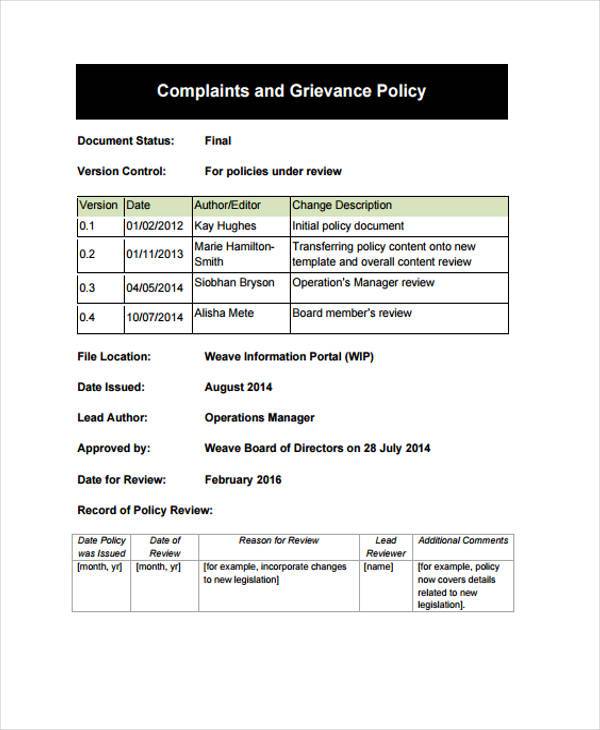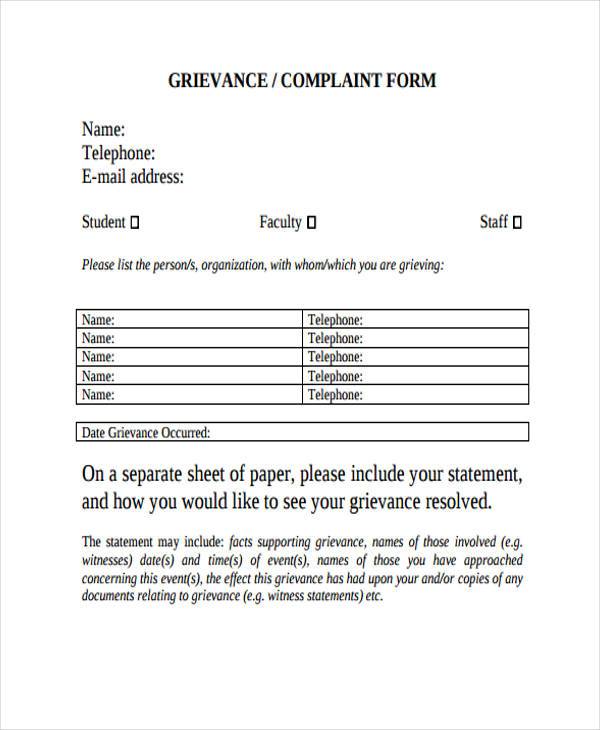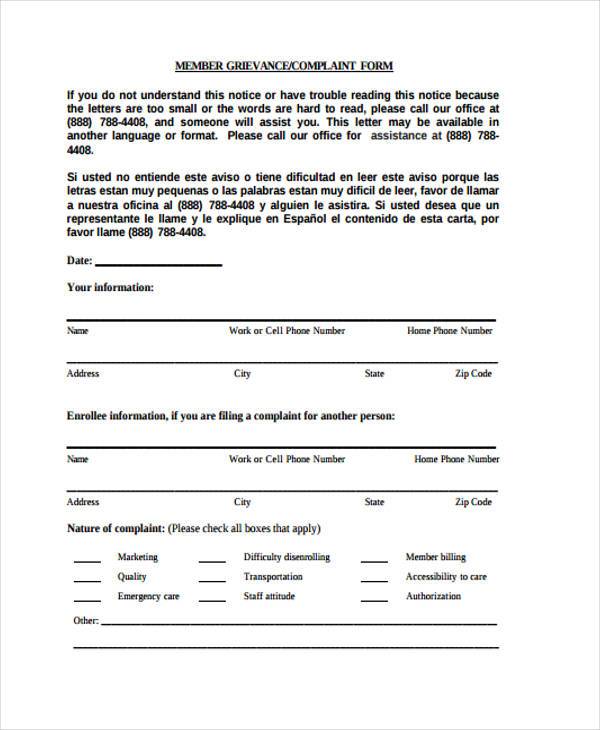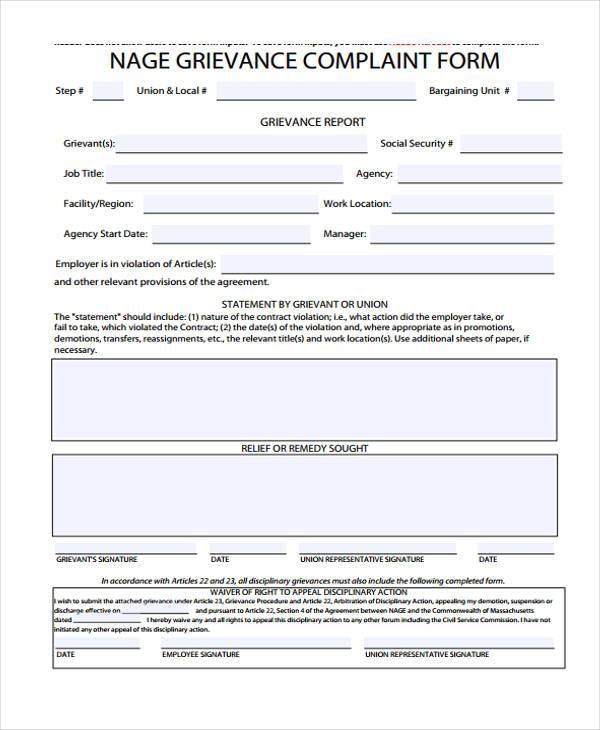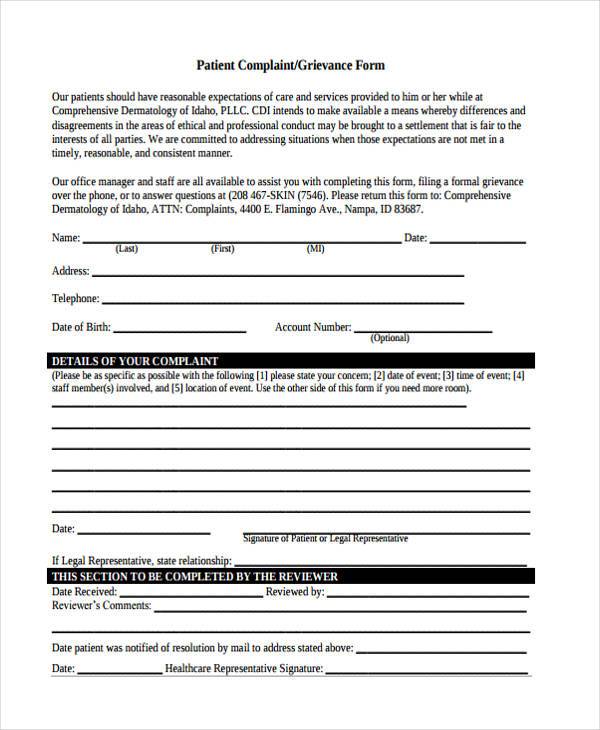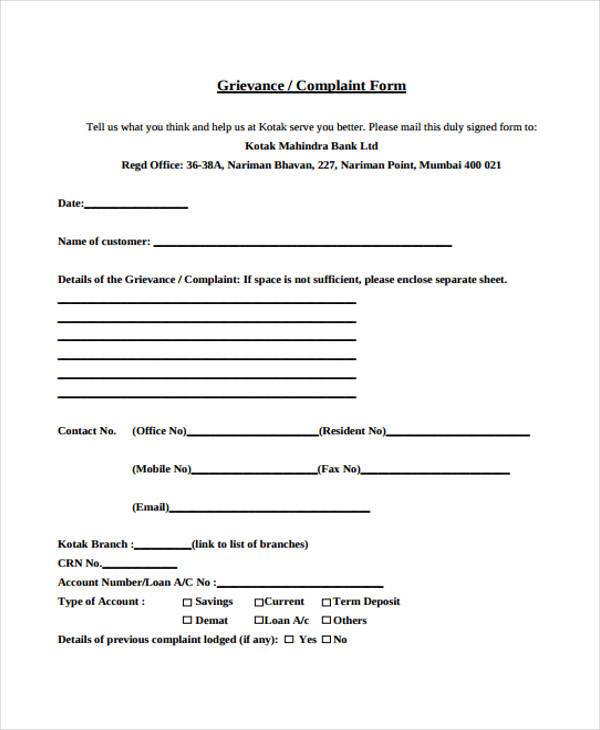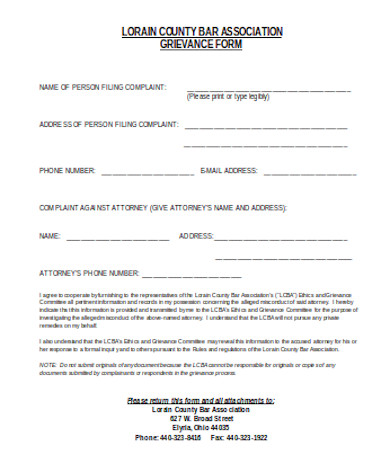A Grievance Procedure is the process of settling disputes or complaints by people within an organization or a company, or the act of addressing complaints between a company and its clients or the people they transact business with such as vendors, contractors, and suppliers.
Grievance Procedures are intended to allow companies to settle complaints or disputes in an efficient and less costly manner before it progresses into litigation. Having a Grievance Procedure in place allows employers, companies, and organizations to control an issue before it becomes too big to handle and also helps to maintain good employee relations.
Grievance Committee Complaint Form
Grievance Policy Complaint Form
Grievance Complaint Form in PDF
Grievance Complaint Form Employee
Having a Grievance Procedure set up in the workplace is crucial to ensure healthy relationship ties within the company and to promote communication between employees and upper management. One main objective of having a Grievance Procedure is to allow employees an avenue to air out their grievance and to help upper management clarify the nature of the grievance so that they can conduct a thorough investigation and come up with appropriate actions or resolutions.
Grievances versus Complaints
A lot of people often interchange grievances with complaints. However, in a formal Grievance Procedure, a complaint is generally an expression of displeasure such as a complaint for bad service, or stating your office chair is too low. A grievance is when an actual violation of the company’s code of conduct or a violation of the employer-employee agreement is made. Typically, when an employee’s complaint is submitted with the use of a Grievance Form, a Complaint Form, or with the use of Official Complaint Forms, the complaint then becomes a grievance.
The Advantages of Having Grievance Procedures in the Workplace
- It fills in as an outlet for employee dissatisfaction and discontent.
- It urges employees to raise their concerns without dread of retaliation.
- It gives a reasonable and expedient method for managing grievances.
- It prevents minor differences from aggravating into a full-on argument.
- It promotes openness and trust in the workplace environment.
Sample Grievance Complaint Form
Grievance Complaint Form Example
Patient Complaint Grievance Form
Free Grievance Complaint Form
General Grievance Complaint Form
How to Deal with Grievances
Dealing with employees who are disappointed and frustrated to begin with is not an easy feat. A smart and savvy manager should be able to settle grievances or figure out resolutions before the problem exacerbates into a more complex situation. Here’s how you can properly manage Grievance Reports:
1. Recognize Disappointment
The way that a manager or upper management responds to a grievance is critical. Managers should recognize and acknowledge the disappointment being reported to them and not be oblivious to it. Being oblivious to the problem or the issue at hand will only worsen the employee’s frustrations and aggravate the problem.
2. Characterize the Issue
As a manager, you should be able to make attempts at characterizing the exact issue at hand instead of dealing with unclear feelings of discontent. Allow the employee to voice out his concerns so you can properly understand what he is trying to convey.
3. Focus on Getting the Truth Out
Most people who have grievances are already so frustrated or disappointed that they tend to get emotional when they are asked to discuss the issue. Regardless of how the other person is feeling, focus on separating fictional data from factual ones. Resolutions or actions done in lieu of grievance should be based on facts and not hearsay to maintain the employee’s morale.
4. Analyze and Think of a Resolution
Different types of grievances call for different measures. While it is important to let an employee feel that they are valued by actually trying to settle any issues that they have with the company or the management, it is also important that decisions be formulated while basing these on other factors that could be affected.
5. Provide Feedback on the Development of the Issue
Any decisions made pertaining to the issue should be communicated to the concerned employee. A follow-up should also be done to make sure that the issue has been completely resolved or if further discussions have to be made.
You can download our sample forms and our Employee Complaint Forms so you can easily print and use them as a way of encouraging employees to share their thoughts and concerns with you.
Related Posts
-
FREE 6+ Sample Member Complaint Forms in MS Word | PDF
-
FREE 5+ Sample Eviction Complaint Forms in PDF
-
FREE 7+ Sample Guest Complaint Forms in PDF | MS Word
-
FREE 7+ Sample Landlord Complaint Forms in PDF | MS Word
-
FREE 6+ Sample Service Complaint Forms in PDF | MS Word
-
FREE 8+ Sample Vendor Complaint Forms in PDF | MS Word
-
FREE 8+ Sample Product Complaint Forms in PDF | MS Word
-
FREE 8+ Sample Complaint Reporting Forms in PDF | MS Word
-
FREE 7+ Sample Administrative Complaint Forms in PDF | MS Word
-
FREE 8+ Sample School Complaint Forms in PDF | MS Word
-
FREE 7+ Sample Staff Complaint Forms in PDF | MS Word
-
FREE 8+ Sample Tenant Complaint Forms in PDF | MS Word
-
Grievance Form
-
Customer Complaint Form
-
5 Ways to Handle Customer Complaints in Food Industry
